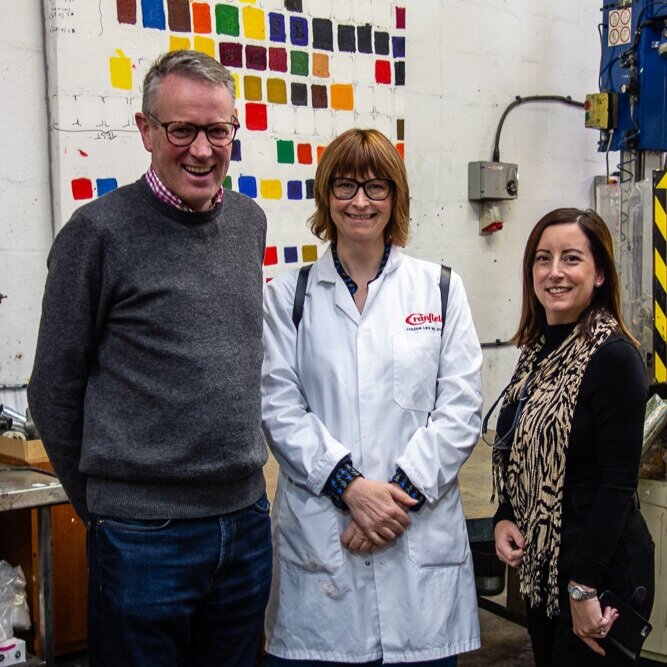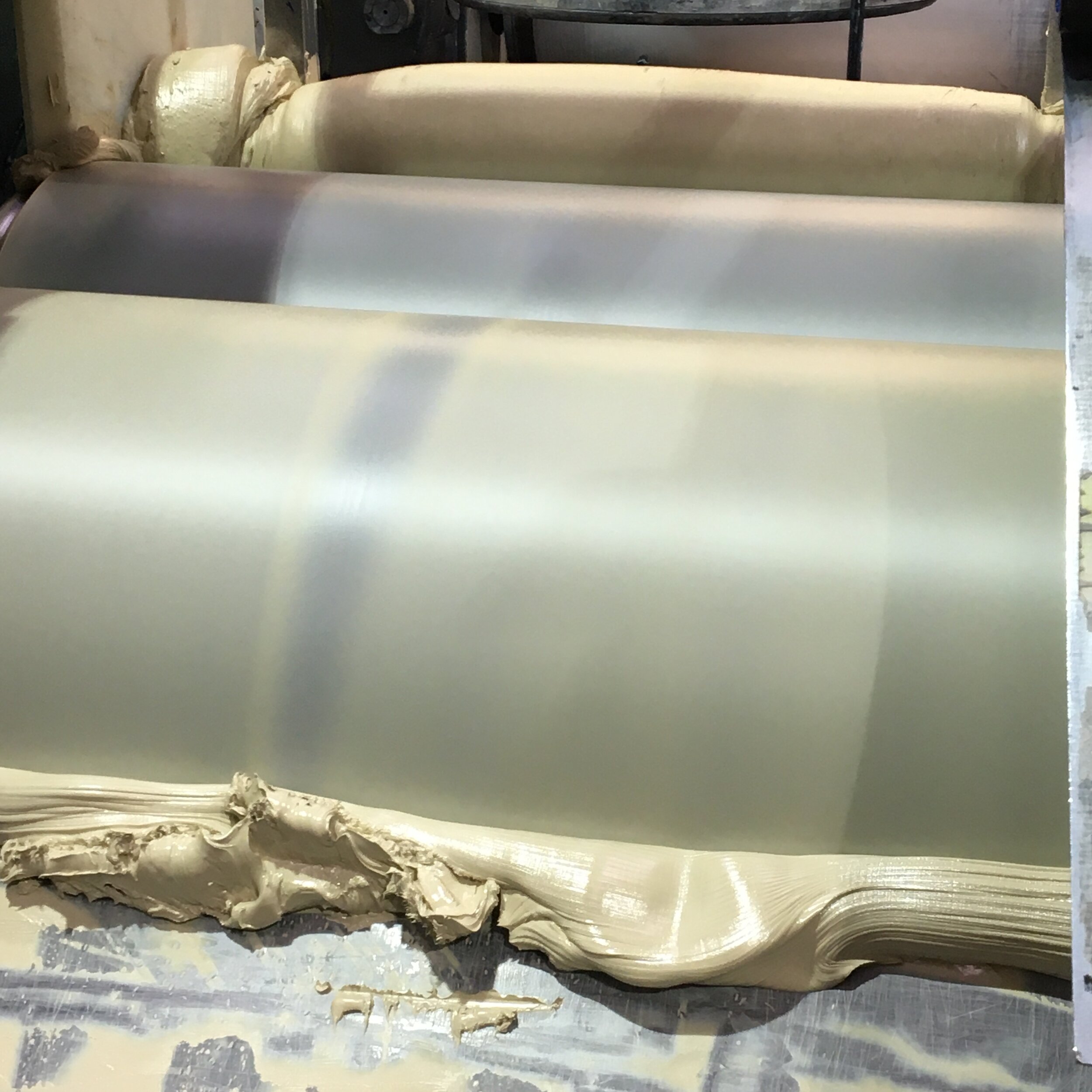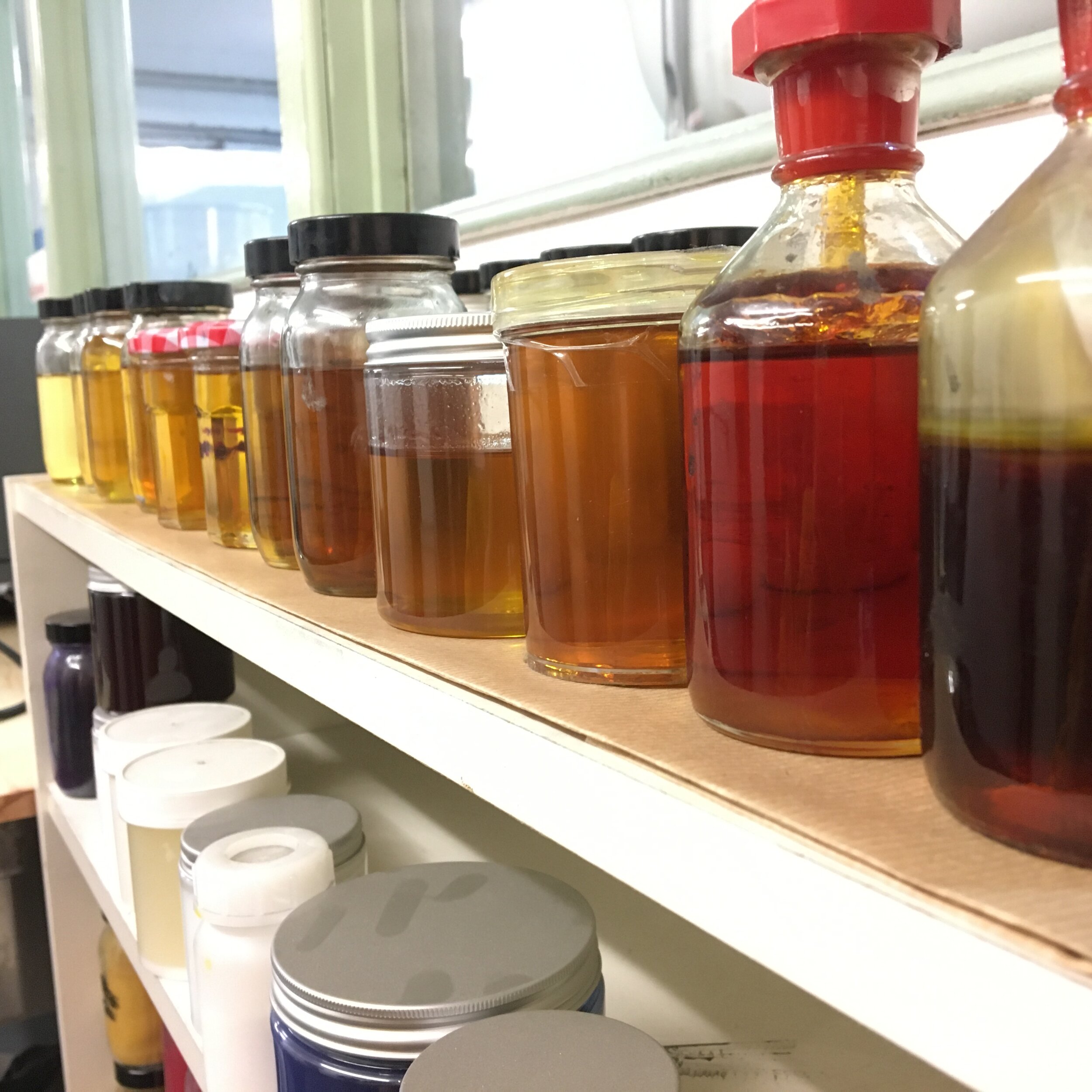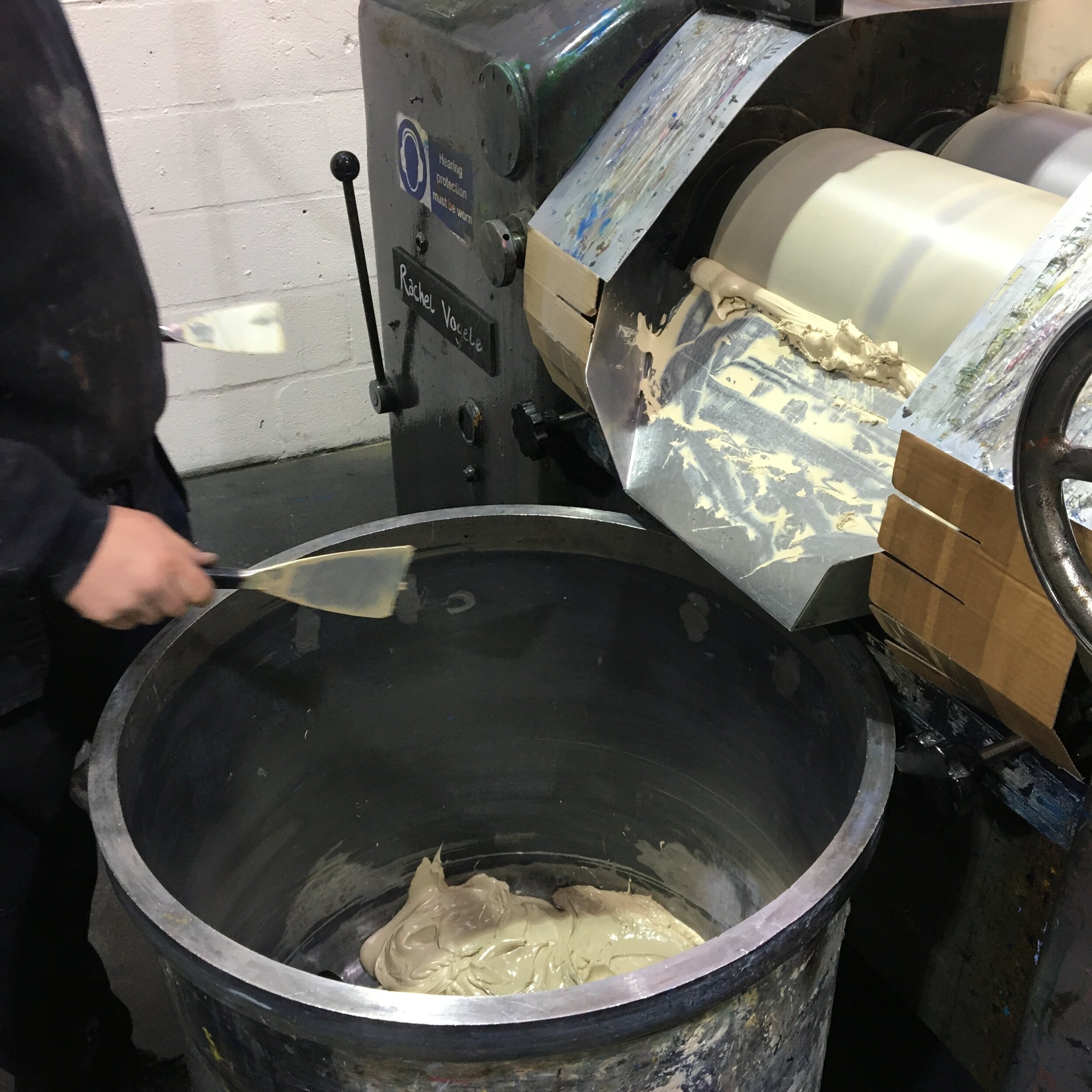Cranfield Colours: meeting a manufacturer
Episode 15: Interview with materials manufacturer Michael Craine of Cranfield Colours
Most artists will have some relationship with colour, whether it be ink, paint, pencil or paper. The colours you choose are important for many reasons, for their colour for one, but also for their longevity, their intensity, their opacity, their sheen, their ability to work on top or underneath other colours…the list goes on. Today's guest lives and breaths colour and he talks to Laura and Peter about some of the science, and why choosing your materials well is so important.
In this episode, Laura and Peter go on a road trip for a gloriously nerdy and fascinating interview with Michael Craine, managing director of Cranfield Colours. Cranfield is a family firm with a long history as makers of high quality artist’s oil paints and printmaking inks
In this episode…
1. Do your research and take the time to understand how your materials work together as a whole. A good manufacturer will be invested in providing well-packaged materials that support the longevity of your artwork and will be happy to answer any technical questions you may have about their products.
2. Many improvements have been made to the safety and environmental friendliness of art products, so never write off materials without checking your information is up to date. The same goes for materials with a reputation for being unsafe: some are quite safe for use in an artist’s studio and the toxicity refers to their use in an entirely different context.
3. There is no gold standard for colour names and nor is there a set standard to define terms like ‘artist’ or ‘student’ in product ranges. Get into the habit of reading labels and learn the terms for your products; it’s your best guide to quality and suitability. Reputable manufacturers like Cranfield have a web sites rich in information about their products.
4. Explore additives and what they can do to improve your paints and inks. Michael emphasises that this is one of the rare times when you really need to read the instructions before getting stuck in. Don’t forget how you manipulate your paints and ink is important too, especially for printmakers.
5. Take Michael’s advice when it comes to cleaning up. Look after your skin by washing your hands, not too often, in cool water (hot water opens pores and makes your skin more vulnerable) and use a barrier cream. It’s a mistake to demonise white spirit or turps, they are fine for your skin and the environment when used carefully.
6. There’s a lot you can do yourself to protect your finished artwork: good preparation and care while producing the work, careful drying and framing, plus some sensible advice for the client, should see you work lasting for many decades to come.
Take Aways…
Deepen your understanding of materials and give yourself a real visual treat by visiting Cranfield’s website at www.cranfield-colours.co.uk and see if you can rise to Michael’s challenge with a really tricky question!









